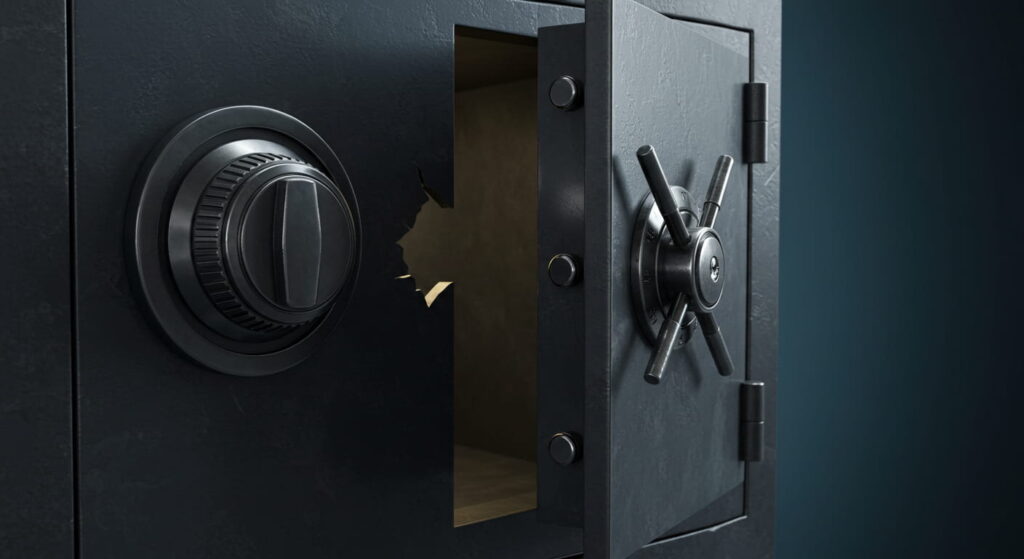

Safes are an important mechanical device for securing valuables, important documents, and sentimental items. However, they can sometimes become inaccessible due to a broken lock. Whether it’s a mechanical failure, a damaged key, or an electronic malfunction, losing access to a safe can be frustrating and concerning. In such situations, the expertise of a locksmith often comes to the rescue. But can a locksmith open a safe with a broken lock? The answer is yes, but the process, tools, and techniques depend on the type of safe and the nature of the lock damage. Let’s explore how a safe locksmith service can help you open a safe with a broken lock.
Locksmiths are trained professionals skilled in bypassing, repairing, and replacing locks without damaging the contents of a safe. When dealing with a broken safe lock, their approach includes:
The methods employed by locksmiths depend on the type of safe and the nature of the lock failure. Here are some common techniques:
Dial Manipulation:
Lock Picking:
Drilling:
Safe Scoping:
Key Extraction:
Electronic Bypass Techniques:
Force-Opening:
Not all locksmiths specialize in safe opening, and selecting the right professional is important. Consider the following when hiring a locksmith:
To avoid lock failures, regular maintenance of safes is essential. Here are some tips:
Mechanical Combination Locks:
Key-Operated Locks:
Electronic and Biometric Locks:
Professional Servicing:
Locksmiths must adhere to legal and ethical guidelines when opening safes. They are required to verify ownership of the safe before proceeding. This verification protects against unauthorized access and ensures compliance with laws.
Common forms of ownership verification include:
Are you dealing with a broken safe locksmith? No worries. NYC City Safe is here at your service. Our expert locksmiths have the right tools and equipment to open your safe and fix it right there. We have the right tools and equipment to handle all types of safes.
Feel free to contact us and let us know how we can assist you.
“When my safe with many important documents in it wouldn’t open, I got anxious and googled several different ways… Left a couple messages and never heard anything back. Then I found City Safe – they came the same day. They completely fixed everything!!! City Safe rescued us! Thanks so much!”

“They completed the lock replacements and repair fast! So happy I worked with them! The price is great! Very reasonable! Will use them again in the future!”

“Responded to my call right away! Thank goodness for you guys! Didn’t know I needed repair on my locks and that they needed maintenance every now and then! They provided a professional and good value service and I got a consultation for free. Do not hesitate to work with them!”

“Got locked out of my jewelry safe, it wouldn’t open and it made so anxious! Called City Safe and I am so glad that they respond immediately! They saved the day and recommended me some maintenance methods. Beyond grateful! Highly recommend!”

“They completed my repair and maintenance so fast! Didn’t expect that! So glad I worked with experts! Very reasonable price too! Thanks guys!”

“Woah! I didn’t know my safe needed repair that’s why I got locked out! I knew I had to properly maintain it but I didn’t know how and the guys from City Safe helped me out, a lot! They provide professional and good value service! You also get a consultation for free!!! Would recommend to family and friends! ☺”

“Got so worried how to move my safe without damaging my floor! I didn’t want to pay for the damage! City Safe saved the day and helped me all throughout the entire process. Beyond grateful for this! Recommended you guys to my family and friends!”

“I planned to move out but didn’t know what to do with the safe I have. It’s large so I was not certain of the process of moving. I called City Safe and they were glad to help! So thankful for them! No damages and I was able to transfer it to a recommended area in my new place!”

“ They provide professional and good value service! You also get a consultation for free!!! Would recommend to family and friends!”

“After losing my keys right sometime recently my greatest assembly of the year, I thought it was the conclusion of the world. I looked for a Locksmith in New York and called City Secure instantly. Realizing my crisis, a locksmith arrived in less than 30 minutes and was able to grant me about quick get to my supplies. I was so inspired by the incite benefit that I called them back after my assembly to supplant the locks at my office. Predominant, incite and dependable benefit earned my trade for life!”

“Changed keys and locks again for security purposes. City Safe always sends technicians that are super knowledgeable, and most importantly, honest and reliable!”

“Clear, concise explanation of the system and provided helpful tips for its maintenance as well. Will highly recommend this team!”











Provided to all neighborhoods in New York.
We will make sure you are happy with our service
On all safes sold. City Safe provides a warranty for all service
We will ship your safe to almost every state